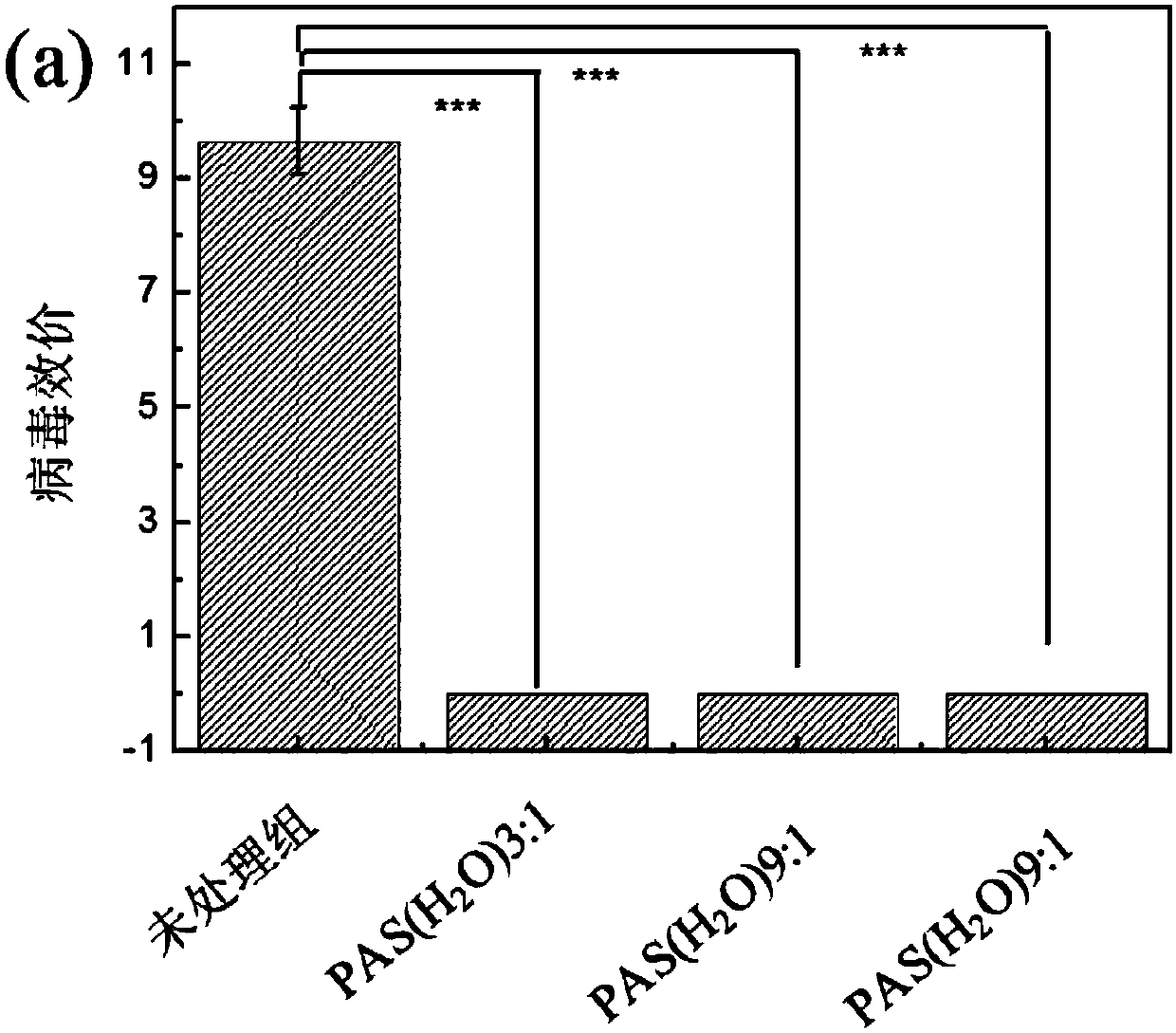Method used for inactivating virus based on atmospheric pressure low temperature plasma activated solution
A low-temperature plasma and plasma technology, applied in chemistry and other fields, can solve problems such as unsatisfactory sterilization efficiency, non-normal reproduction, high dosage of drugs, etc., and achieve the effects of avoiding air pollution, easy control, and simple operation
- Summary
- Abstract
- Description
- Claims
- Application Information
AI Technical Summary
Problems solved by technology
Method used
Image
Examples
Embodiment 1
[0028] Example 1 Method for inactivating Newcastle disease virus NDV LaSota by plasma activated water
[0029] A kind of method of plasma activated water deactivation Newcastle disease virus NDV LaSota, adopt following steps: 1, cultivate Newcastle disease virus NDV LaSota strain with SPF chicken embryo allantoic fluid, specifically, NDV LaSota strain (from Beijing Academy of Agriculture and Forestry) infected 10-day-old specific pathogen-free (SPF) chicken embryos. Centrifuge at low speed to collect the allantoic fluid. Collected viruses were stored at -20 °C until use.
[0030] 2. In the experiment of plasma activated water inactivating viruses, first prepare plasma activated water, place the atmospheric pressure low temperature plasma excitation device at 2cm below the liquid surface of 10ml deionized water, open the gas source to the atmospheric pressure low temperature plasma generator Into the working gas air, adjust the gas flow rate, the flow rate of the working gas ...
Embodiment 2
[0038] Example 2 Method of Plasma Activation of Physiological Saline (PAS(NaCl)) to Inactivate Newcastle Disease Virus NDV LaSota
[0039] A kind of method that plasma activated physiological saline (PAS (NaCl)) inactivates Newcastle disease virus NDV LaSota, adopts following steps: 1, cultivate Newcastle disease virus NDV LaSota strain with SPF chicken embryo allantoic fluid, specifically, will NDV LaSota strain (provided by Beijing Academy of Agriculture and Forestry Sciences) infected 10-day-old specific pathogen-free (SPF) chicken embryos. Centrifuge at low speed to collect the allantoic fluid. Collected virus was stored at -20°C until use.
[0040] 2. In the experiment of plasma activated saline (PAS (NaCl)) inactivating virus, first prepare PAS (NaCl), and place the atmospheric pressure low-temperature plasma excitation device in 10ml of physiological saline (0.9% sodium chloride solution) liquid At 2cm below the face, turn on the gas source and feed the working gas ni...
Embodiment 3
[0046] Embodiment 3 The method of plasma activated hydrogen peroxide solution inactivating avian influenza virus
[0047] A plasma-activated hydrogen peroxide solution (PAS(H 2 o 2 )) The method for inactivating avian influenza virus adopts the following steps: 1. Use SPF chicken embryo allantoic fluid to cultivate the avian influenza virus strain, specifically, avian influenza virus H9N2WD strain (provided by Beijing Academy of Agriculture and Forestry Sciences) is infected for 10 Day-old specific pathogen-free (SPF) chicken embryos. Centrifuge at low speed to collect the allantoic fluid. Collected virus was stored at -20°C until use.
[0048] 2. In PAS (H 2 o 2 ) In the experiment of virus inactivation, first prepare PAS (H 2 o 2 ), place the atmospheric pressure low temperature plasma excitation device at 2cm below the liquid level of 10ml hydrogen peroxide solution (mass fraction is 0.3%), open the gas source and feed the working gas argon into the atmospheric press...
PUM
 Login to View More
Login to View More Abstract
Description
Claims
Application Information
 Login to View More
Login to View More - R&D
- Intellectual Property
- Life Sciences
- Materials
- Tech Scout
- Unparalleled Data Quality
- Higher Quality Content
- 60% Fewer Hallucinations
Browse by: Latest US Patents, China's latest patents, Technical Efficacy Thesaurus, Application Domain, Technology Topic, Popular Technical Reports.
© 2025 PatSnap. All rights reserved.Legal|Privacy policy|Modern Slavery Act Transparency Statement|Sitemap|About US| Contact US: help@patsnap.com



